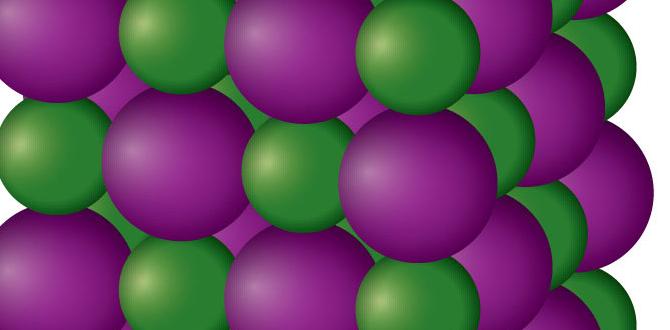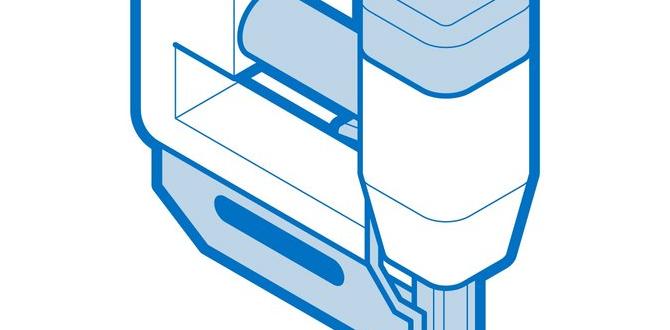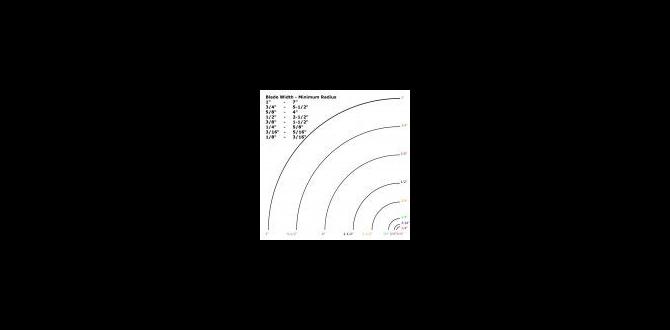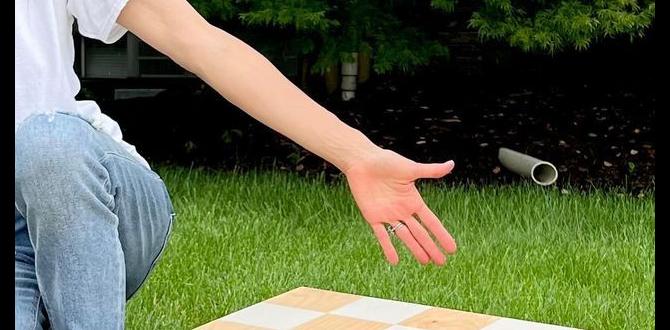Have you ever walked into a room and felt instantly at home? Solid hardwood installation can create that warm, inviting feel. Imagine walking on beautiful, natural wood that adds charm and elegance to your space.
Many people love hardwood floors. They are strong, long-lasting, and can last for decades with proper care. But did you know that installing hardwood can also be a fun DIY project? The idea of transforming your space might sound exciting, right?
In this article, we’ll explore how to install solid hardwood floors. We’ll cover everything from what tools you need to tips for making the process smoother. So, are you ready to learn how to bring your home to life with solid hardwood installation?
Table of Contents
Solid Hardwood Installation: A Comprehensive Guide To Success

Understanding Solid Hardwood Installation
Solid hardwood installation offers a timeless appeal for any home. Choosing solid hardwood means you get durability and beauty together. It’s like bringing nature indoors! Did you know that solid wood can last a lifetime if well cared for? When installing, make sure the wood is properly acclimated. This prevents warping and ensures the best fit. Also, consider hiring a professional for the best results. With solid hardwood, your space can feel warmer and more inviting, making it a perfect choice for families.Understanding Solid Hardwood Flooring
Types of solid hardwood: species comparison and characteristics. Benefits of solid hardwood flooring: durability, aesthetics, and value.Wooden floors can be a fun and classy touch for any home. Solid hardwood comes in many types, each with unique traits. For instance, oak is strong and looks great, while maple is lighter and has a subtle charm. With solid hardwood, you get lasting durability, gorgeous looks, and good value. You can even choose colors that make your home feel cozy or bright. So, whether you have kids, pets, or a penchant for dance parties in the living room, solid hardwood can handle it all!
| Wood Species | Durability | Appearance |
|---|---|---|
| Oak | High | Warm tones, bold grain |
| Maple | Medium | Light, smooth finish |
| Cherry | Medium | Rich, reddish-brown hue |
Preparing for Installation
Assessing the subfloor: moisture levels and structural integrity. Tools and materials needed for a successful installation.Before beginning installation, you must check your subfloor. Look for moisture levels and structural integrity. Too much moisture can damage the hardwood. Also, ensure the subfloor is strong and level. Use these tools and materials for a smooth installation:
- Moisture meter
- Leveling compound
- Hammer
- Saw
- Measuring tape
- Wood adhesive
Preparing well makes everything easier. Plus, it helps your new floor last longer!
What tools do I need for solid hardwood installation?
To install solid hardwood, you will need a few essential tools. You’ll need a moisture meter, a saw, and a measuring tape. These tools help ensure your project is a success.
Choosing the Right Solid Hardwood
Factors to consider: wood species, grade, and finish. Where to source highquality solid hardwood products.Picking the perfect solid hardwood isn’t just a walk in the park; it’s more like a stroll through a magical forest! Start by considering wood species. Each type has its unique charm. For example, oak is tough, while maple is smooth like butter.
Next, think about the grade. This tells you the wood’s quality. Higher grades have fewer knots and blemishes. And don’t forget the finish! A good finish not only looks great but also protects your floor from spills and scratches.
For high-quality solid hardwood, check out local lumber yards or reputable online suppliers. They often offer a variety of options. Remember, choosing the right wood is key to a happy home. It’s like finding the right snack—important, and a bit fun too!
| Factor | Description |
|---|---|
| Wood Species | Determines durability and appearance. |
| Grade | Indicates the quality level of the wood. |
| Finish | Affects the look and protection level. |
Installation Methods for Solid Hardwood
Nail down vs. glue down vs. floating installation techniques. Pros and cons of each method: which is best for your project?.Choosing the right way to install solid hardwood can feel like a puzzle. There are three main methods: nail down, glue down, and floating. Each method has its own set of perks and quirks. For example, nail down is strong but takes time and skill. Glue down sticks well but can be messy. Floating installation is easy and quick, like a dance party for your floor! Check out the table below for a quick comparison:
| Method | Pros | Cons |
|---|---|---|
| Nail Down | Durable, great for uneven surfaces | Requires more skill and tools |
| Glue Down | Strong bond, ideal for basements | Messy and takes time to dry |
| Floating | Easy to install, can be DIY | Not as sturdy as the others |
So, which method is best for your project? If you’re a DIY enthusiast, floating might just be your best friend. But if you want something really sturdy, consider nailing it down. Just don’t forget your tool belt! 🛠️
Step-by-Step Installation Process
Preparing the area: clearing furniture and laying out materials. Detailed guide to the installation process for each method.To begin with solid hardwood installation, first clear the area. Move all furniture out of the way. This makes room for your work. Next, lay out your materials. You’ll need your hardwood planks, nails, and tools.
Follow these steps for your installation:
- Start in the corner of the room.
- Place the first row of planks.
- Nail down each plank securely.
- Continue with each row, staggering the joints.
- Finish by trimming any excess wood.
What do I need for solid hardwood installation?
For your project, gather hardwood planks, nails, a hammer, and a saw. Optional tools include a flooring nailer or a miter saw. This will make your work smoother.
Finishing Touches After Installation
Choosing the right finish: oilbased vs. waterbased options. Maintenance tips to ensure the longevity of your hardwood floors.After laying down your new hardwood floors, the fun isn’t over yet! The right finish can make your floors shine like a star on a bad hair day. You can choose between oil-based and water-based finishes. Oil-based looks rich and glossy but takes longer to dry. Water-based is quick and easy but sometimes feels lighter. Pick wisely, like choosing between chocolate or vanilla ice cream!
| Finish Type | Drying Time | Durability |
|---|---|---|
| Oil-Based | Slow | High |
| Water-Based | Fast | Medium |
To keep those floors looking sleek, regular maintenance is key. Sweep often to banish dirt and avoid scratches. Use a damp mop with a gentle cleaner. Treat your floors like you treat your pet goldfish—with love and a little water! Remember, happy floors last longer.
Common Challenges During Installation
Troubleshooting common issues: gaps, warping, and subfloor concerns. Tips for ensuring a smooth installation experience.Installing solid hardwood can be tricky. Common problems include gaps, warping, and subfloor concerns. Here are some tips to avoid these issues:
- Check your subfloor. It should be clean and dry.
- Leave space around the edges for expansion.
- Use the right tools and materials.
- Acclimate the wood before installation.
Addressing these challenges early will make your installation smoother. Don’t forget to ask for help if you need it!
What should I do if there are gaps after installation?
If you see gaps, try to fill them with wood filler or caulk for a clean look.
Post-Installation Care and Maintenance
Best practices for cleaning and maintaining solid hardwood flooring. Recommended products for preserving the beauty and integrity of your floors.Keeping your solid hardwood floors looking great is easy if you follow some simple tips! First, always use a soft broom or a vacuum without a beater bar to remove dust and dirt. For deeper cleaning, a damp mop with a pH-neutral cleaner works wonders. Avoid soaking the floors; they prefer a quick splash over a swim!
| Cleaning Tip | Recommended Product |
|---|---|
| Dusting | Microfiber Mop |
| Wet Cleaning | Pine-Scented Floor Cleaner |
| Spot Cleaning | Vinegar and Water Solution |
Scratches can happen, but don’t worry! Use felt pads under furniture legs to avoid unsightly marks. With these tips, your floors will stay as stunning as the day they were installed!
Conclusion
In conclusion, solid hardwood installation adds beauty and value to your home. You’ll enjoy its durability and timeless style. Remember to choose the right tools and materials for a smooth process. If you want to learn more, consider reading guides or watching videos. Happy installing, and enjoy your beautiful new floors!FAQs
What Are The Key Steps Involved In Preparing A Subfloor For Solid Hardwood Installation?To prepare a subfloor for solid hardwood, first, we need to clean the area. Next, check if the floor is even. If there are bumps or gaps, we must fix them. Then, it’s important to let the wood adjust to the room’s temperature. Finally, we can start installing the hardwood!
How Can You Determine The Optimal Moisture Content Of Hardwood Before Installation?To find the best moisture content for hardwood, you can use a moisture meter. This tool checks how much water is in the wood. You should compare the reading from your hardwood with the reading of the place where you will install it. Ideally, they should be similar. This helps the wood fit well and stops it from warping later.
What Tools And Materials Are Necessary For A Successful Solid Hardwood Installation?To install solid hardwood, you need a few important tools and materials. First, you’ll need hardwood planks. Then, get a measuring tape and a saw to cut the wood. You also need a hammer and nails to put the pieces together. Finally, some underlayment helps make the floor softer and quieter!
What Are Some Common Mistakes To Avoid During The Installation Of Solid Hardwood Flooring?When you install solid hardwood flooring, avoid making these mistakes. First, don’t skip letting the wood acclimate. This means you should leave the wood in the room for a few days. Second, make sure the floor is clean and dry before you start. Also, always check for level flooring; if it’s not even, your boards might not fit well. Lastly, don’t forget to leave a little space around the edges for expansion.
How Does Acclimation Of Solid Hardwood Planks Affect The Overall Installation Process?Acclimation is when we let the hardwood planks sit in a room for a few days. This helps the wood adjust to the room’s temperature and humidity. If we skip this step, the wood can warp or crack after we install it. So, taking time to acclimate makes sure our floor looks nice and lasts longer!






